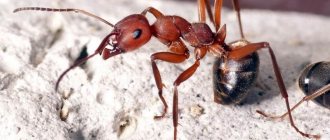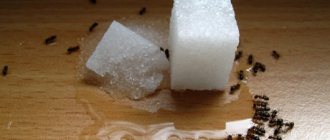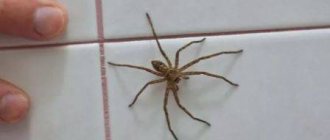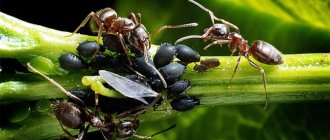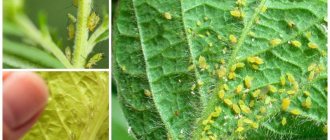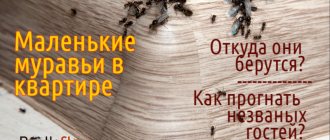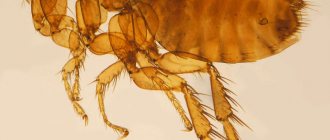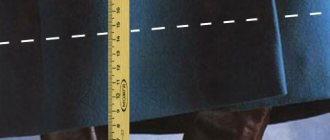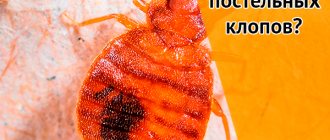Everyone has known ants since childhood. These creatures are characterized by labor-intensive abilities, thanks to which they carry objects many times the weight of their own body.
Also, many people know about the omnivorous nature of individuals living in natural conditions (forests, fields, vegetable gardens), as well as parasites that settle in human homes. Household pests are especially adapted to different types of food, making them quite difficult to eliminate.
Even if the apartment is kept perfectly clean, some housewives may find these insects in their kitchen and other rooms of the apartment. To understand the essence of behavior and survival of ants in different environmental conditions, you should understand what they prefer to eat in nature and at home.
Ant diet
Depending on the species, habitat and time of year, the menu of ants may vary. Even strict vegetarians, like harvester ants, change their preferences when they get into the house. For this reason, what ants eat in nature is very different from their gastronomic preferences in the apartment.
On a note!
Most ants are divided by type of food: larvae and queens feed on protein foods, workers eat easily digestible carbohydrates.
Ants often drink “honeydew” - the sweet juice of a plant that is released when there is a sharp change in air temperature.
Ant food
Gourmets among the ants
Some types of ants, with all the variety of food balance, choose only 1-2 types of food. These gourmets include the following insects:
- Leaf-cutter ants. They are making hay.
Leaf-cutter ants
Forager ants drag pieces of leaves into the anthill. They themselves grind them to a sticky pulp. It is placed in special chambers in the anthill. Like greenhouses. Mushrooms sprout on the leaf porridge. Ants do not feed on hard grass. - Centromyrmex ants. They feed only on termites;
- Pinerina. In this subfamily of insects, each species feeds on one type of insect.
- Ant-Dracula. Interesting insects. They prefer to be saturated with the juice of their larvae without harming their health. They feed insects to the larvae.
Woodworms: what do they eat?
The food of wood borers is the rotten pith of dead trees. Adult woodworms can feed on such rough food due to the presence of bacteria in their intestines that help digest cellulose. By eating rotting trees in the forest, woodworms bring significant benefits.
On a note!
But these same insects in log houses can eat the core of the walls and build an anthill there. When woodworms appear in the house, it is better to take measures to exterminate them.
Ant feeding frequency
The feeding frequency of insects is directly affected by the amount of food that is nearby. It is important that the food be constant, since ants need to regularly develop endurance and work actively. During the day they can eat up to 5 times.
Insects responsible for searching for a food source can take food directly at the place where they found it, as well as while carrying food to the nest to feed the entire colony. Even having settled in human housing, where there is constant access to food, they will not leave a single crumb unattended and will pick up everything that comes their way.
In the absence of various goodies, the ants switch to other food sources. The usual diet is easily replaced by food that is non-traditional for a particular species. This is necessary to replenish lost energy and ensure adequate nutrition of the uterus, which brings new offspring.
Individuals that permanently live in the anthill are responsible for the safety of the female and feed on the available supplies supplied by working insects.
Garden pests and their bugs
One of the serious enemies of gardeners is the black garden ant. The species is omnivorous, but if given a choice, ants eat the sweet secretions of aphids. If there are no aphids in the garden, the “shepherds” will carefully bring them with them, because ants and aphids live in close symbiosis. Pests collect the honeydew and take it to an anthill, which they set up in any place convenient for them:
- soil;
- old stump;
- wall of the house;
- in the crack under the window sill.
In the last two cases, they enter the house. In the house, garden ants eat everything they can find, justifying their omnivory. Having found sweet food: sugar or honey, the garden pest will drag it into the anthill. In the garden, they can also not only breed aphids, but also harm plants. According to gardeners, representatives of the “black garden” species feed on young cabbage seedlings in the spring. Climbing into the hives for honey, these insects harm beekeepers.
Food for ants
Portion or quantity of feed
Many novice myrmikeepers have a fair question - how often to feed the ants? Lunch time, as well as portion size, matters. Loving owners often show unnecessary care and overfeed their colony. This can be even more harmful than short hunger strikes.
Careful observation will help you determine how much to eat. If pets leave an uneaten piece of boiled meat or half a cricket, it means they are full. The remains should be removed from the formicarium, and next time a smaller portion should be offered.
If you notice that newborn babies are small in size, this indicates a lack of food. Add protein dishes to your diet. It is the protein that helps the brood mature and grow into normal-sized individuals.
Over time, each aspiring myrmikeeper gets to know his colony better. There is an understanding of portion size and culinary preferences. Watch your pets, notice changes in mood and activity. Feed a variety of healthy foods. Do it carefully and with pleasure.
Forest ants
Red forest ants are fairly harmless creatures.
On a note!
This species is sometimes called red forest.
Their anthill is always in the forest. They crawl into the house only in search of food if the housing is located near an anthill. In nature, forest ants feed on:
- caterpillars;
- seeds;
- aphid honeydew;
- honey dew;
- fruits of plants.
A little about the digestion process of ants
In ants, the food organs are divided into the preoral chamber and the digestive tract. Under the lower lip there is a preoral chamber, which acts as a receiver for semi-liquid and liquid food, including various residues after cleaning the body. Here the food is “sorted” - everything edible goes into the mouth, and inedible particles are released in the form of small lumps.
The digestive tract is divided into anterior, middle and posterior sections. In the anterior one there is a crop, which acts as a “social stomach”, since food intended for the entire nest is stored in it. The process of digesting food occurs in the swollen midgut, called the stomach.
Ants are an integral part of the ecological chain. In nature they are of great benefit. But once settled in a house or on a plot of land, they become a big problem. The main enemies of pests are cleanliness and order!
Pharaoh ant
Food for the ant
A species that has become completely at home with humans over the course of two centuries. The diet of pharaoh ants is no different from the human diet. Under natural conditions, indoor pests feed on the same things that their red-haired counterparts eat in the forest:
- plants' seeds;
- small invertebrates;
- insects and larvae.
But in the house these parasites become a real disaster. Their diet is expanding significantly. Foods that ants eat at home:
- bread;
- sugar;
- potato;
- cereals;
- oil;
- cheese;
- meat;
- sausage;
- sweets.
Naming what they don’t eat is much easier than listing everything that these insects eat. They are especially attracted to sweets as food. They are quite capable of eating only sweets, cookies, pastries and cakes.
At home, almost all types of ants become omnivores and feed on the same food as humans.
Food of predator ants
Diet of predator ants
The diet of ants living in various tropical countries is varied in diet and most of them are predators:
- Nomadic or wandering - they are among the most dangerous ants in the world, predators and eat animal food: insects and their larvae, small lizards, frogs and even small chicks, they also feast on wounded or dead animals.
- The bulldog is a very interesting predatory species of ants, which has powerful mandibles that help in hunting: it collects small insects and invertebrates with which it feeds its larvae.
- Red fire ants eat various insects; in their habitat they reduce the number of agricultural pests, destroying cotton weevils and moths on sugar cane. They attack and drive away their own brothers.
Interesting!
There are honey ants that specially fatten some of their comrades into a “barrel” state, unable to move and living in a nest. When a period of hunger or drought occurs, the “canned” ants secrete syrup, which is food for the rest of the colony.
Underground roads of wood borers
The stump in which such forest ants live is surrounded by fresh and old sawdust, which indicates continuous work. At the same time, not a single individual is visible around the dwelling itself. The erroneous impression is created that the insects do not leave the shelter. This is not entirely true. It’s just that the paths they use are not visible from the outside.
Black forest ants make underground passages in the surface soil that look like real tunnels. Where do they lead? It's simple: a network of such passages stretches to the nearest stumps and spruce trees, from where woodworms deliver insects and pollen. Underground roads are an excellent alternative to dangerous land routes. In addition, it is more difficult to reach your destination on the ground, and ants move quickly along corridors. Underground pathways become traps for other insects that enter them. Woodworms will happily take advantage of such prey.
How do ants' mouthparts work?
Ants have a gnawing type of mouthparts, which can be roughly divided into three parts: the upper and lower lips and jaws, with which the insect chews food. The jaws can be large and small, sharp and blunt, smooth and with teeth, overlapping or closing - it depends directly on the type of Hymenoptera. Ants have a small tongue on their lower lip, which is a taste organ.
Ants belong to the order Hymenoptera, although only males and females have the means to fly, and simple workers move exclusively with the help of their paws.
Harmful effects of insects
For all their usefulness, insects also cause harm by breeding numerous aphids. However, for forest plantations this is not so scary; the benefits of ants outweigh the negative impact. But the accumulation of aphids can cause significant damage to gardens and vegetable gardens.
Forest ant bites are dangerous because they release acid. The substance in small quantities is not dangerous, but can cause allergic reactions in the form of itching, redness, and swelling. But numerous bites cause general intoxication of the body with dizziness, nausea, and pain. Allergy sufferers may experience swelling in the face and throat, speech impairment, and blood pressure changes. In the most difficult situations, anaphylactic shock is possible.
Formic acid is dangerous to the eyes because it causes chemical burns. To reduce pain, apply ice to the bite site and take an antihistamine.
